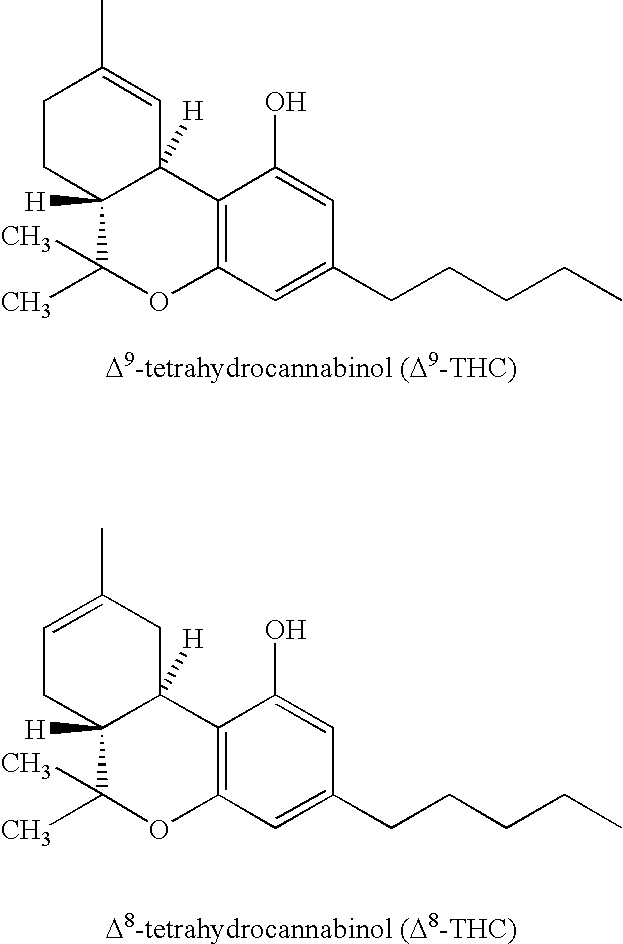Aerosol formulations of delta tetrahydrocannabinol
a technology of tetrahydrocannabinol and delta tetrahydrocannabinol, which is applied in the direction of biocide, plant growth regulator, non-active ingredient pharmaceuticals, etc., can solve the problems of difficult if not impossible purification of active constituents from plant materials such as waxes, sterols, and similar bad effects on the lung from tars and other components
- Summary
- Abstract
- Description
- Claims
- Application Information
AI Technical Summary
Benefits of technology
Problems solved by technology
Method used
Image
Examples
example i
To identify dose-limiting toxicity, healthy human volunteers are administered Δ8 Tetrahydrocannibinol aerosol formulations according to the invention at low dosages which are incrementally escalated while monitoring the subjects for dose-limiting side effects (such as psychotropic symptoms)
example ii
To identify therapeutically effective amounts and times, terminal oncology patients are administered Δ8 Tetrahydrocannibinol aerosol formulations according to the invention at low dosages which are incrementally escalated until either the maximum acceptable level in Example I is reached, or the side effects in patients become too high, or sufficient efficacy is seen that increasing the dose further is unnecessary.
The following examples illustrate alternative aerosol formulations.
example 1
IngredientWeight in gEthanol0.10P-134a2.02delta-8-THC0.01Lipoid S100 ™0.05
Lipoid S100™ is a phospholipid.
PUM
| Property | Measurement | Unit |
|---|---|---|
| particle size | aaaaa | aaaaa |
| structures | aaaaa | aaaaa |
| temperature | aaaaa | aaaaa |
Abstract
Description
Claims
Application Information
 Login to View More
Login to View More - R&D
- Intellectual Property
- Life Sciences
- Materials
- Tech Scout
- Unparalleled Data Quality
- Higher Quality Content
- 60% Fewer Hallucinations
Browse by: Latest US Patents, China's latest patents, Technical Efficacy Thesaurus, Application Domain, Technology Topic, Popular Technical Reports.
© 2025 PatSnap. All rights reserved.Legal|Privacy policy|Modern Slavery Act Transparency Statement|Sitemap|About US| Contact US: help@patsnap.com


